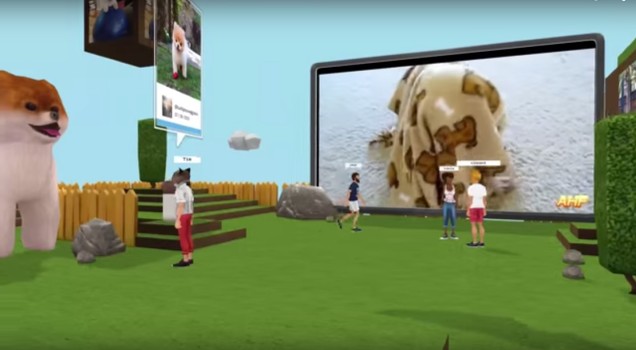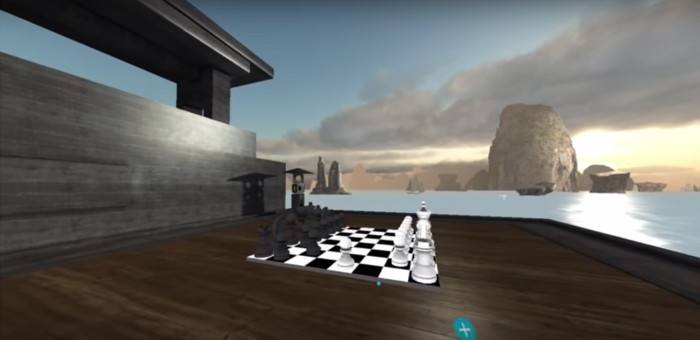The Army’s Research Laboratory Simulation and Training Technology Center has begun work on a browser-based viewer for OpenSim that uses WebGL, HTML 5 and Javascript technology.

“The initial work was done using our MOSES Grid Manager that laid down the interfaces to the Open Simulator needed for this task,” said Douglas Maxwell, the science and technology manager for virtual world strategic applications at the center.
The MOSES Grid manager is an open source project, with code available on GitHub.
“In the future, grid management tasks and server control functions will be performed in the same client as the graphical interface,” said Maxwell.
He declined to provide additional details about the viewer.
“That is all we are prepared to talk about for now,” he said.
What is WebGL?
WebGL and HTML 5 are the latest developments in Web technology, and allows virtual world environments to run right inside a browser.
Cloud Party was a browser-based virtual world that required no plugins, and even had in-world building tools. It shut down in early February when the entire company was bought up by Yahoo.

More recently, Beloola launched a browser-based virtual world platform. Since the platform runs in the browser, and both mobile and desktop browsers are starting to support virtual reality, Beloola plans to have support for Oculus Rift, Gear VR and Google Cardboard headsets early next year.
Once a virtual world is running in a browser, it makes it possible to start looking at virtual reality support since Mozilla is working on adding full support to Firefox, and Google to Chrome.
For example, the MozVR project not only switches a display to the side-by-side stereoscopic view needed for virtual reality, but also allows users to change the direction in which they are looking by putting on the Oculus Rift headset and turning their heads. Similarly, the mobile version switches to the side-by-side view, and uses the smartphone’s built-in sensors to track where the user is looking.

Google, meanwhile, has its Chrome Experiments for Virtual Reality, and I’ve tried it out on my Android phone and it works, though the selection of experiences is pretty weak right now.
On the plus side, it’s already built into the Chrome browser on Android phones. Just open the browser, and go to vr.chromeexperiments.com and you can check it out.
Why is this important for OpenSim?
The social component is going to be huge for virtual reality. Roleplaying games, obviously, will have to have multi-user support for their virtual reality versions.
But outside of gaming, there are an infinite number of social applications for virtual reality. Socializing, of course, but also meetings and events, education and training, group tours and group shopping, museum exhibit openings, concerts and other live performances of all kinds.
At first, there will be stand-alone apps in all of these areas. But, as we’ve found out in OpenSim, creating an outfitting a new avatar for each new applications is a real pain the butt. You might want to have a personal avatar for family and friends, a school or business avatar, an anonymous avatar, and a couple of avatars for your favorite games, but after a while you’re going to get avatared-out.

And once you have an avatar, you have clothing and other content associated with that avatar you might want to have access to. And the friends or contacts list. And you want to be able to take that avatar from one application to another.
At this point, it starts to look a lot like the OpenSim hypergrid.
And, in fact, the OpenSim hypergrid is currently best positioned to become that platform. It’s fully open source, completely scalable, with a big ecosystem, both professional and user-created content, lots of hosting providers and builders and developers and other vendors, and a broad base of users and developers working on the platform.
The graphics aren’t great compared to high-end video games. But if you look at the Web itself, the graphics don’t compare to high-end games either. Games can download most of their content ahead of time, so users get a fast interaction when they go online. Web sites have to be able to load all their content very quickly, since there’s no guarantee that users have already been there and had a chance to pre-cache some content. Similarly, OpenSim regions have to be able to load quickly for new visitors, and even with the graphics we have now, the loading time is rather reminiscent of the loading time of early Web pages.
If OpenSim drops the ball, and is slow to add full support for virtual reality, then it opens the way for other companies to step in with their own alternatives. And those alternatives might be proprietary. And who wants to live in a Facebook- or Microsoft-owned metaverse?
- Kitely Mega Worlds on sale for $90 per month - July 19, 2024
- OpenSim regions up, actives down with summer heat - July 15, 2024
- People think AIs are conscious. What could this mean for bots in OpenSim? - July 12, 2024
